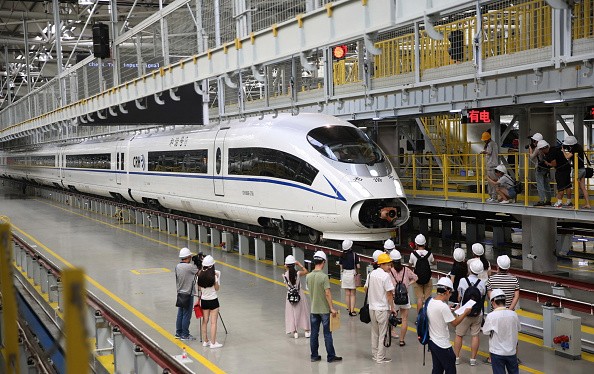Thanks to the extensive deals done during the formative years of China's high-speed rail technology venture, the country is now touted as the "superstar" of the said industry, railway-technology.com featured in one of its articles.
In December last year, the world has seen the opening of the final phase of a rather ambitious project from China--the 2.3km Shanghai-Kunming HSR line that traverses the provinces of Zhejiang, Jiangxi, Hunan, Yunnan and Guizhou. The line, which can run at up to 350km/h, cuts the travel time from Shanghai to Kunming overwhelmingly--from 34 hours to only 11.
This feat proves the capability of China's HSR industry, though considered relatively young. It was only in 2003 when it opened the 200km/h Qinhuangdao-Shenyang HSR.
According to the feature, this rapid growth may be attributed to the transfer deals that were made in the early years of the country's HSR. Back then, the policy has required foreign firms to "form joint ventures or partnerships with Chinese manufacturers and transfer key pieces of their technology."
One of the earliest partnerships was that of Siemens and a local firm. According to a press release dated Nov. 2005, the project which aimed to build 60 high-speed trains required to involve technology transfer.
"Siemens has long been one of the most trustworthy and close partners of China's high-speed industry. With our technologies serving multiple main high-speed lines in China, Siemens is proud to be part of China's effort to build up the world's largest high-speed network," a spokesperson of the company shared, adding that they "are open to various types of cooperation for win-win results and hope to continue to make contributions to China's high-speed development."
The transfer policy has been deemed by experts as a "short cut" to make it to the top of the global HSR industry.
Yatang Lin, a researcher from the Centre for Economic Performance of the London School of Economics, enthused that "there were ambitions to get everything done pretty quickly. Of course, there were political motives there. Therefore, the fastest and safest way was to use foreign technology."
Acknowledging the significant role of transfer deals, Beijing Jiaotong University professor Jia Limin, shared: "We couldn't achieve anything without them."
"Chinese companies could learn while the HSR network was being constructed. They can get a lot from foreign companies," she added.
These sentiments were proven true by a research conducted by the University of Oxford's Department of Economics. The 2012 study concluded: "We estimate that without international joint ventures China's growth would have been about one percentage point lower per annum over the last three decades."
As China's high-speed rail technology continues to grow, the government has shown strong commitment to supporting the industry. It eyes to expand the HSR network "to 30,000km by 2020, covering approximately 80 percent of major cities," the article noted.



























